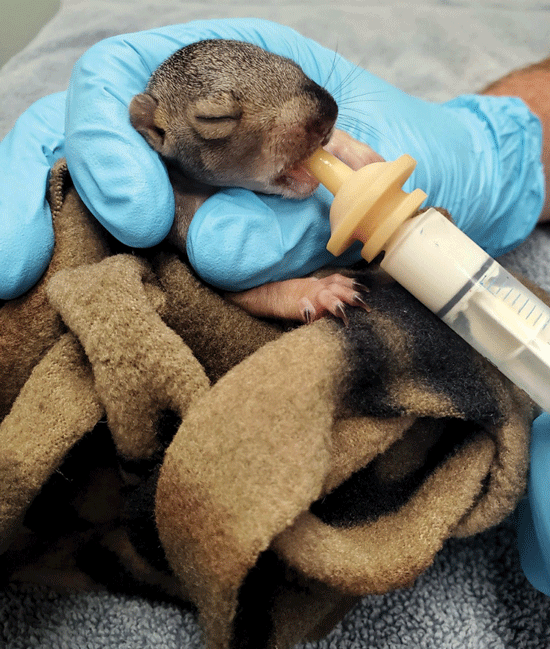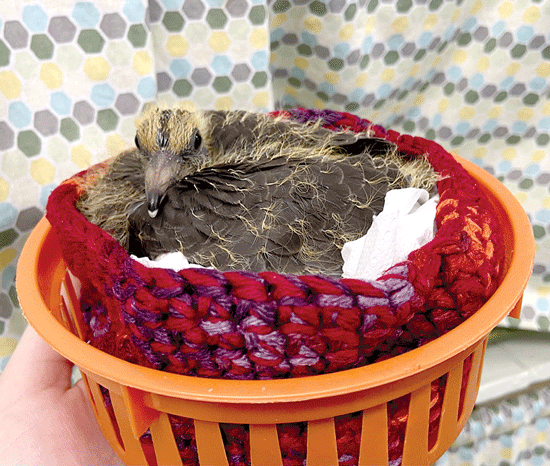Late Summer Orphans
There is a vehement outcry against squirrels this year that are razing local gardens from fruit trees to home-grown veggies. The California Wildlife Center (CWC), however, is doing what they are meant to do: saving orphaned wildlife, even squirrels, who are among several species that give birth multiple times a year.
While most animals are born in the spring in Southern California, we do have a few species that will give birth multiple times a year. Some species that we commonly see are also able to give birth year-round due to our temperate climate.
Eastern Fox squirrels like this young orphaned kit, generally give birth twice a year—once around February and again around now. The fall squirrels do not come in the same numbers as the spring squirrels, but they are reliable harbingers of coming autumnal temperatures and shortening days. Squirrels build two nests in the trees, constructed primarily of leaves. That way if one of their nests is destroyed by tree trimmers, wind, or predators, they can move their young to another nest. After windstorms we generally see an increase in the numbers of orphaned squirrels found—they may blow out of their nests and a human finds them before their mother.
We generally advise, whenever possible, for the finder to attempt to return the squirrel to their dray (the name for a group of squirrels). While we have a very high success rate with orphan squirrels, we can never replace the care or type of nutrition that a mother can give. At this young age, he needs to be fed five times a day from sunrise to sunset.
Virginia opossums will also give birth twice a year. Hummingbirds, Mourning Doves and Band-tailed Pigeons will all give birth year-round. There is a larger surge of young being born in the spring but we do get to see them in smaller numbers throughout the year.
This Band-tailed pigeon was brought to us by a CWC volunteer from the West Valley animal shelter in Chatsworth. He’s healthy but needs more time to become fully feathered (you can still see his downy baby feathers in those whisps) and flighted before he can survive on his own.
The survival rate for second season animals is likely lower. The mothers have less nutrition to give their young and heat stress can be a detrimental factor. Additionally, there are some late summer diseases that take advantage of immune systems already depressed by heat. West Nile Virus can thwart both late season American Crows and second
This this young orphaned squirrel kit needs to be fed five times a day from sunrise to sunset.















